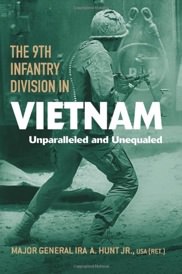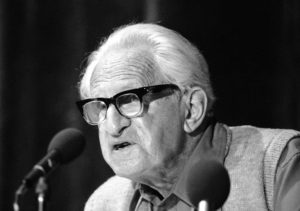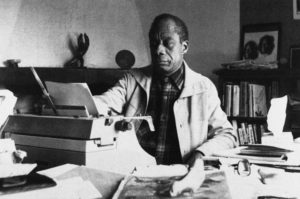Mortal Sins of Omission
The lone living top commander implicated in a slaughter of civilians and cover-up has written a history of the US 9th Infantry Division in Vietnam, and what his book does not say could have grim and far-reaching consequencesWhat a new history of the U 9th Infantry Division in Vietnam does not say could have grim and far-reaching consequences.
Recently Gen. David Petraeus, the top U.S. commander in Afghanistan, used particularly bloodthirsty language to announce success there. “We’ve got our teeth in the enemy’s jugular now, and we’re not going to let go,” he said after a morning staff briefing in January. Petraeus has used this type of imagery before. In his latest guidance for counterinsurgency (known within the military as COIN) efforts in Afghanistan, issued last August, Petraeus wrote that what U.S. troops and their allies needed was to “get our teeth into the insurgents and don’t let go.” It seemed to me almost as if he was channeling retired major-general-turned-author Ira Hunt. (In the early 1970s, Hunt was quoted as favoring “pounding the shit” out of Vietnamese enemies he referred to as “bastards,” “sonofabitches” or “gooks.”)
Hyperbolic talk like this is, of course, the stock in trade of many military men. But there’s another side to David Petraeus. A soldier-scholar and Princeton Ph.D., “King David,” as he’s known to fans and detractors alike, literally wrote the book on COIN — having overseen the revision of FM 3-24, the military’s counterinsurgency field manual, in 2005-2006. Petraeus revived the strategy — long discredited and shunned in military circles — that went down in flames with the American defeat in Vietnam. Supposedly a kinder, gentler brand of warfare, counterinsurgency is geared toward winning the “hearts and minds” of the people, and Petraeus knew it well, since his 1987 doctoral dissertation was titled “The American Military and the Lessons of Vietnam.”
The 9th Infantry Division in Vietnam: Unparalleled and Unequaled
By Ira A. Hunt
The University Press of Kentucky, 216 pages
The kinder, gentler side of Petraeus is heard from mostly in his COIN guidance to U.S. troops in Afghanistan: “[U]se only the firepower needed to win a fight … if we kill civilians or damage their property in the course of our operations, we will create more enemies than our operations eliminate. … Treat the Afghan people and their property with respect.” That is, of course, the essence of COIN: Use the rifle instead of the bomb, or better yet use the knife, protect the civilian population and their property, facilitate good governance and offer economic opportunity. Win hearts and minds. But although he’s been Mr. Nice Guy on paper, in the field Petraeus has decidedly been the guy looking to go for the throat. Again, he reminded me of Ira Hunt.
Since Petraeus took command in Afghanistan, airstrikes — which were curtailed by his predecessor, Gen. Stanley McChrystal, before he was laid low by a Rolling Stone article — have gone through the roof, tripling in number last fall and then doubling the January 2010 rate in the new year. Kick-down-the-door night raids, which have alienated many and provoked repeated outcries from Afghan President Hamid Karzai, have tripled too. For the first time, big U.S. battle tanks — much like the ones the Soviets used in the 1980s — have been deployed to provide, said one officer, “awe, shock and firepower.” (Yes, you read it right: shock and awe.) U.S. forces are also meting out home destruction as never before in Afghanistan, reportedly blowing up hundreds of houses thought to be booby-trapped and even blasting villages off the map, as Afghan farmers abandon their homes, fields and crops and stream out of the countryside into Kabul’s expanding slums. It all made me wonder whether David Petraeus was taking a page from “The 9th Infantry Division in Vietnam,” that is, whether he was reading from Ira Hunt’s playbook.
|
To see long excerpts from “The 9th Infantry Division in Vietnam” at Google Books, click here. |
Ira “Jim” Hunt’s “The 9th Infantry Division in Vietnam: Unparalleled and Unequaled” chronicles a unit that carried out a particularly heavy-handed version of counterinsurgency in Vietnam’s Mekong Delta. The shocking thing is, you wouldn’t know it from reading Hunt’s book.
One would expect a history of the 9th Infantry Division in Vietnam to address long-standing allegations that the division wiped out thousands of civilians using heavy firepower. One would assume it would mention the division commander’s oft-noted obsession with the notorious “body count.” One would imagine that the book would attempt to explain how the division reportedly killed almost 11,000 armed enemy fighters, in just one operation, but recovered fewer than 800 weapons. One would suppose that somewhere in its close to 200 pages the author would at least give the name of the infamous operation that so many prior books and articles have called into question. But nowhere does Hunt dare to mention “Speedy Express.” It’s almost as if he wants us to forget it ever existed. The reason might be that Ira Hunt was, in fact, the No. 2 commander of the 9th Division during the operation.
Over the course of his new book, Hunt — a West Point grad who also studied at the French engineering school at Grenoble and worked for Secretary of Defense Robert McNamara before serving in Vietnam — offers, in painstaking detail, the official history of the efforts of the “Old Reliables” in Southeast Asia from May 1968 to July 1969, complete with numerous black-and-white photographs and 20 tables filled with statistics. In his introduction, he explains his motives for writing the book as twofold: first to “enlighten those who disparage the division’s combat record in eliminating the enemy and pacifying the Mekong Delta region” and also “to provide examples of the bravery and dedication of all the 9th Division soldiers” who fought in the sweltering far south of Vietnam against an enemy the Americans called the VC (shorthand for Viet Cong or Vietnamese communists).
In page after page, Hunt chronicles tactical innovations, lauds American combat triumphs and obsessively reiterates that the 9th Infantry Division’s methods — that is, his methods — were incredibly effective in “stunning and eliminating the enemy” and enabling troops to “scarf up groups of guerillas and VCIs” (Viet Cong Infrastructure — civilians who worked for the Vietnamese revolution). All of this, Hunt reminds us again and again, was done for the purpose of “accelerating pacification.”
In many ways, “The 9th Infantry Division in Vietnam” rehashes much of the material included in “Sharpening the Combat Edge,” an official history written as part of an Army program to develop “future operational concepts” that he co-authored in 1974 with the late Julian Ewell, who commanded the 9th Division in 1968-1969. Unlike Hunt’s latest volume, that book at least contains an oblique reference to criticisms made about the unit. Ewell and Hunt defensively noted, “The 9th Infantry Division … [has] been criticized on the grounds that ‘their obsession with body count’ was either basically wrong or else led to undesirable practices.” In Hunt’s latest offering there is only a handful of mentions of “body count” — the main indicator of success in America’s war of attrition in Vietnam — and the lack of references to that core concept, like so much else missing from the book, is conspicuous by its absence.
In a military where “if it’s dead and Vietnamese it’s VC” became standard operating procedure, Ewell — who came to be called “the Butcher of the Mekong Delta” — and Hunt were especially known to be fixated on stacking up Vietnamese bodies without, contemporaries observed, much care as to whether they were armed guerrillas or innocent civilians. In his 2002 memoir, “Steel My Soldiers’ Hearts,” the late David Hackworth, who took command of one of the 9th Division’s infantry battalions in January 1969, wrote of the overwhelming pressure to produce high body counts. “[A] lot of innocent Vietnamese civilians got slaughtered because of the Ewell-Hunt drive to have the highest count in the land,” he wrote. He also noted that when Hunt submitted a recommendation for a citation, citing a huge kill ratio — the number of Vietnamese killed to the number of Americans lost — he left out the uncomfortable fact that “the 9th Division had the lowest weapons-captured-to-enemy-killed ratio in Vietnam.” In May 1970, a whistle-blower from within the division wrote a letter to Army Chief of Staff William Westmoreland (who had previously been the top American commander in Vietnam) charging that he had “information about things as bad as My Lay.” He reported, however, not one massacre like My Lai, where U.S. troops slew more than 500 civilians, or even a handful of mass killings, but, instead, official command policies that had led to the slaughter of thousands of innocents:
Sir, the 9th Division did nothing to prevent the killing, and by pushing the body the [sic] count so hard, we were “told” to kill many times more Vietnamese than at My Lay, and very few per cents of them did we know were enemy. ….
In case you don’t think I mean lots of Vietnamese got killed this way, I can give you some idea how many. A batalion would kill maybe 15 to 20 a day. With 4 batalions in the Brigade that would be maybe 40 to 50 a day or 1200 to 1500 a month, easy. (One batalion claimed almost 1000 body counts one month!) If I am only 10% right, and believe me its lots more, then I am trying to tell you about 120-150 murders, or a My Lay each month for over a year. …
In that letter and two more sent the following year to other high-ranking generals, the whistle-blower reported that artillery, airstrikes and helicopter gunships had wreaked havoc on populated areas. He also singled out Ira Hunt as one of the prime reasons for civilian casualties. “Hunt, who was our Brigade Commander for awhile and then was an assistant general … used to holler and curse over the radio and talk about the goddamn gooks, and tell the gunships to shoot the sonofabitches, this is a free fire zone,” he wrote. He said that Hunt “didn’t care about the Vietnamese or us, he just wanted the most of everything, including body count” and that “Hunt was … always cussing and screaming over the radio from his C and See [Command and Control helicopter] to the GIs or the gunships to shoot some Vietnamese he saw running when he didn’t know if they had a weapon or was women or what.”
The 9th Infantry Division in Vietnam: Unparalleled and Unequaled
By Ira A. Hunt
The University Press of Kentucky, 216 pages
Maj. William Taylor Jr., an officer in the 9th Division headquarters under Ewell, had a similar recollection of Hunt from his days in the Mekong Delta. Now a retired colonel and senior adviser at the Center for Strategic and International Studies, Taylor told me, during a 2008 interview, about flying over rice paddies with Hunt. “He said something to the pilot, and all of a sudden the door gunner was firing a .60-caliber machine gun out the door, and I said, ‘What the hell is that?’ He said, ‘See those black pajamas down there in the rice paddies? They’re Viet Cong. We just killed two of them.’ ” Immediately afterward, Hunt spoke again to the pilot. “He was talking body count,” Taylor said. Later he questioned Hunt about how he could identify guerrillas from the helicopter, without seeing weapons or receiving ground fire. “He said, ‘Because they’re wearing black pajamas.’ I said, ‘Well, sir, I thought workers in the fields wore black pajamas.’ He said, ‘No, not around here. Black pajamas are Viet Cong.’ “
In multiple interviews, retired Lt. Gen. Robert Gard, who commanded the 9th Division’s five artillery battalions during his 1968-69 tour, talked to me about Ewell’s heavy emphasis on body count. When asked if Hunt also pressed for the same, Gard responded, “Big time.” “Jim Hunt dubbed himself ‘Rice Paddy Daddy,’ ” Gard recalled, referring to Hunt’s radio call sign. “He went berserk.”
I’ve recounted these allegations against Hunt and the 9th Division in print and questioned him about them in person — and I’m hardly alone. Hunt, who denied the allegations against him when I questioned him in 2006, addresses none of these long-public accusations against him or Ewell or even mentions his division’s whistle-blower and instead opts for a startlingly disingenuous, stunningly contemptuous and thoroughly dismissive nod to such criticisms. More than 140 pages into “The 9th Infantry Division in Vietnam,” Hunt offers a single paragraph that begins:
Despite the great success of division’s pacification efforts, there were some who decried the collateral damage resulting from military operations. … One correspondent bemoaned that the tranquility of the peasants living in VC base areas was disturbed by attacks. …
Hunt’s reference to the loss of “tranquility” makes it sound as though the worst of the war in the Mekong Delta was the jarring sound of artillery being fired or the scream of jet aircraft streaking across the sky. It was anything but. Those artillery shells and the bombs those planes dropped landed somewhere. Too often they killed civilians.
The use of the phrase collateral damage, perhaps the phoniest euphemism in military-speak, indicates an author unwilling to confront hard truths as they really are. Moreover, with no citation we’re left to guess who this lone correspondent was. It could well have been the Associated Press reporter whose April 1969 article not only quoted Hunt as defending the body count, but also a senior officer who admitted to civilian carnage. (“ ‘Have we killed innocent civilians?’ [the senior officer] asked rhetorically during an interview. ‘Hell yes,’ he replied, ‘but so do the South Vietnamese.”
It could have been a reporter from the Saigon daily Tin Sang or its publisher, South Vietnamese legislator Ngo Cong Duc, who criticized “indiscriminate” U.S. airstrikes in the Mekong Delta and the “careless and insensitive behavior” of 9th Infantry Division troops.
It could also have been the combat correspondent from United Press International who, in December 1969, reported on U.S. advisers’ dismay over what the indiscriminate killing of civilians, in order to achieve a high body count, did to pacification efforts. “We have made progress but you can’t exactly expect people who have had parts of their family blown away by the U.S. 9th Infantry Division to be wholeheartedly on our side,” said one American official. (Other advisers made similar complaints about operations in the delta in print and through official channels, a fact that Hunt also ignores.)
Most likely, however, the correspondent in question is Kevin Buckley, who served in Vietnam as a reporter and then Saigon bureau chief for Newsweek magazine from 1968 to 1972. What Buckley — working alongside Newsweek stringer Alex Shimkin, who first discovered the story — did was not “bemoan the loss of tranquility” in Delta hamlets, but meticulously document how Operation Speedy Express killed thousands of innocent civilians and wounded countless others. While Hunt conspicuously leaves the name Speedy Express out of “The 9th Infantry Division in Vietnam,” he does mention some of its results, referring to the division’s “inflicting over ten thousand casualties on the enemy over a five month period.” That was the official story in 1969 and the one Hunt is still telling today. What Buckley and Shimkin found in the early 1970s was evidence of mass slaughter on a scale that dwarfed My Lai. From December 1968 through May 1969, the 9th Division carried out Operation Speedy Express with support from non-division assets ranging from helicopter gunships to B-52 bombers, yielding an enemy body count of 10,899 at a cost of only 267 American lives. Although guerrillas in the region were known to be well armed, Buckley and Shimkin discovered that the division had captured only 748 weapons.
Though the Newsweek team never knew about the division’s whistle-blower, whose allegations were buried via a high-level Pentagon cover-up orchestrated by Westmoreland, the reporters interviewed U.S. civilian and military officials at all levels, combed through civilian hospital records and traveled — on foot and in jeeps, boats and rafts — into hard-hit areas of the Mekong Delta to speak with Vietnamese survivors. What they learned echoed exactly what the whistle-blower had reported to the Army’s top generals. Huge numbers of airstrikes — by helicopters and fixed-wing aircraft — had decimated the countryside, while withering artillery and mortar barrages were carried out around the clock. Their sources all assured them there was no shortage of arms among the enemy to account for the gross kills-to-weapons disparity. The only explanation for the lopsided ratio, they discovered, was that a large percentage of the dead were civilians.
“The horror was worse than My Lai,” one American official familiar with the 9th Infantry Division’s operations in the delta told Buckley. “But with the 9th, the civilian casualties came in dribbles and were pieced out over a long time. And most of them were inflicted from the air and at night. Also, they were sanctioned by the command’s insistence on high body counts.” Another offered a concrete estimate. He said that as many as 5,000 of those killed during the operation were civilians.
The 9th Infantry Division in Vietnam: Unparalleled and Unequaled
By Ira A. Hunt
The University Press of Kentucky, 216 pages
Ira Hunt neither cites nor even acknowledges Buckley’s June 19, 1972, Newsweek piece, “Pacification’s Deadly Price,” or the many important, well-respected Vietnam War histories that address Speedy Express, such as Andrew Krepinevich’s “The Army and Vietnam,” David Elliott’s “The Vietnamese War” and Marilyn Young’s “The Vietnam Wars, 1945-1990” — not even “America in Vietnam,” a history by Guenter Lewy, an author who takes great pains to minimize U.S. atrocities and tell the rosiest possible story of the war, yet who allows that “the free use of air strikes, artillery and helicopter gunships in the densely populated Delta undoubtedly caused havoc.”
Perhaps even more troubling is Hunt’s decision to ignore the secret Army investigation, commissioned in response to Buckley and Shimkin’s investigation and buried for decades, which suggested the Newsweek article offered a low-end estimate of the carnage. The report reads:
[W]hile there appears to be no means of determining the precise number of civilian casualties incurred by US forces during Operation Speedy Express, it would appear that the extent of these casualties was in fact substantial, and that a fairly solid case can be constructed to show that civilian casualties may have amounted to several thousand (between 5,000 and 7,000).
An author needn’t respond to every criticism floating around or defend him- or herself from every detractor, but in the case of Ira Hunt and “The 9th Infantry Division in Vietnam” the evidence of mass civilian slaughter and the author’s prime role in it demands more than disregard and dismissal. About the only part of the Speedy Express story that Hunt attempts to confront is the utter dearth of weapons, trotting out old canards used in the past to argue that the time and terrain inhibited the ability of troops to find weapons. What he fails to mention is that South Vietnamese forces, whose combat prowess has long been disparaged, managed to capture more than 11 times as many weapons as 9th Division troops at the very same time in the very same Mekong Delta.
Gen. William Westmoreland would kill a nascent investigation into the allegations of mass slaughter committed by Ewell and Hunt’s 9th Infantry Division in 1971. His successor in Vietnam, Creighton Abrams, would be apprised of the reports by the secretary of the Army and conceal them from Buckley. The secret Army report on Speedy Express that validated Newsweek’s findings would then be buried for decades. Hunt, who retired as a major general in 1978, mentions none of it and, with the passing of Westmoreland, Abrams and Ewell, remains the lone living top commander implicated in the slaughter and cover-up of Operation Speedy Express.
Why this sordid history was left out of “The 9th Infantry Division in Vietnam” isn’t hard to fathom — and the consequences of that absence could be grim and far-reaching. Beyond the fact that it distorts the historical record and contributes to a sanitized version of the war that is very popular in recent revisionist tracts, Ira Hunt may be teaching today’s commanders in Afghanistan lethal lessons through his sins of omission.
Recently on “The Best Defense,” his blog at Foreign Policy’s website, former Washington Post combat correspondent and best-selling author Tom Ricks mentioned that “The 9th Infantry Division in Vietnam” was on his reading list. This probably means that Hunt’s book is now on the radar of those carrying out the current war in Afghanistan. When they read it, they’ll find a lot of similarities between Ira Hunt’s version of events in the Mekong Delta and David Petraeus’ heavy-firepower campaign being carried out under the guise of a hearts-and-minds counterinsurgency effort. While the level of civilian deaths caused by U.S. forces in Afghanistan today may not compare with the many thousands slaughtered by the 9th Infantry Division during Operation Speedy Express (not to mention all those by U.S. and allied forces in the Mekong Delta before and after 1968-1969), night raids, home destruction and civilian casualties have caused immeasurable hardship in long-suffering Afghanistan.
There is no such thing as population-friendly, high-kinetic COIN, no matter what Ira Hunt and David Petraeus may claim. There is nothing gentle about a pacification campaign. There is nothing kind about turning villages into battle zones and blowing up homes. Forcing farmers to become refugees and slum dwellers isn’t extending them a helping hand. You don’t win hearts and minds when you cost people their legs. Ask the people who lived through the American war in the Mekong Delta. They will tell you as much. Just don’t ask Ira Hunt. And don’t bother reading his book. Its sins of omission are mortal.
Your support is crucial…With an uncertain future and a new administration casting doubt on press freedoms, the danger is clear: The truth is at risk.
Now is the time to give. Your tax-deductible support allows us to dig deeper, delivering fearless investigative reporting and analysis that exposes what’s really happening — without compromise.
Stand with our courageous journalists. Donate today to protect a free press, uphold democracy and unearth untold stories.










You need to be a supporter to comment.
There are currently no responses to this article.
Be the first to respond.